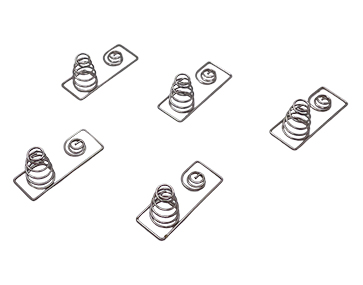Shenzhen Yihongyuan Hardware Spring Co., Ltd.
Contact:Mr. Gao
Mobile:15914134957
19129341913
Tel:0769-88002550
Fax:0755-22633411
Address:
No. 47,Factory Building,Houting Second Industrial Zone,Shajing Street,Baoan District,Shenzhen
No. 15,Haibin Road,Chang'an Town,Dongguan City
When confirming the cross-sectional shape and standard of the material used for the compression spring, the series of standards stipulated by the standards and ministerial standards should be preferred, and the non-standard series of materials should be avoided as much as possible. Medium and small tension springs, especially tension tension springs, should be given priority to use reinforced steel wire, lead, bath isothermal cold drawn steel wire and oil quenched and tempered steel wire, which have high strength and very good surface quality, fatigue function It is higher than the general quenched and tempered steel wire, with simple processing, good manufacturability and stable quality.

Carbon spring steel wire and piano steel wire produce large residual stress after cold drawing. After processing the spring, there is a large residual stress. After tempering, the standard changes greatly, and it is difficult to operate the standard accuracy. The oil quenched and tempered steel wire is modulated and strengthened after the steel wire is drawn to the specified standard. Basically, there is no residual stress. After forming the spring, it is tempered at a low temperature, and the dimensional change is small, and the heat resistance stability is better than that of cold drawing. Reinforced steel wire. For large and medium-sized springs, cold-drawn or cold-drawn polished steel should be used for high load accuracy and stress.
For springs with lower load accuracy and lower stress, hot rolled steel can be used. Compression springs generally use flat steel with trademarks such as 55Si2Mn, 60Si2MnA, 55SiMnVB, 55SiMnMoV, 60CrMn, and 60CrMnB. The material section of the coil spring should preferably be a circular section. Square and rectangular cross-section materials have strong bearing capacity, good impact resistance, and can miniaturize the spring, but the materials used are less sourced. And the price is high, except for special needs, generally do not use this material as much as possible. In recent years, the development of rolling flat steel wire instead of trapezoidal steel wire has achieved good results.
Spring materials used in hot climates require good thermal stability, resistance to loosening or creep, oxidation resistance, and corrosion resistance to certain media. The operating temperature of the spring increases, the elastic modulus of the spring material decreases, the structural rigidity decreases, and the bearing capacity becomes smaller. Therefore, springs operating in extremely hot climates need to know the change rate (value) of the elastic modulus, and calculate the impact of the spring's ability to reduce the performance on the application.